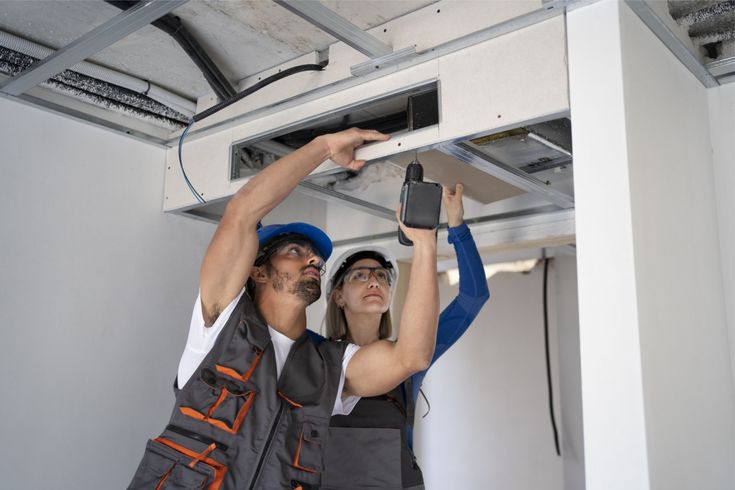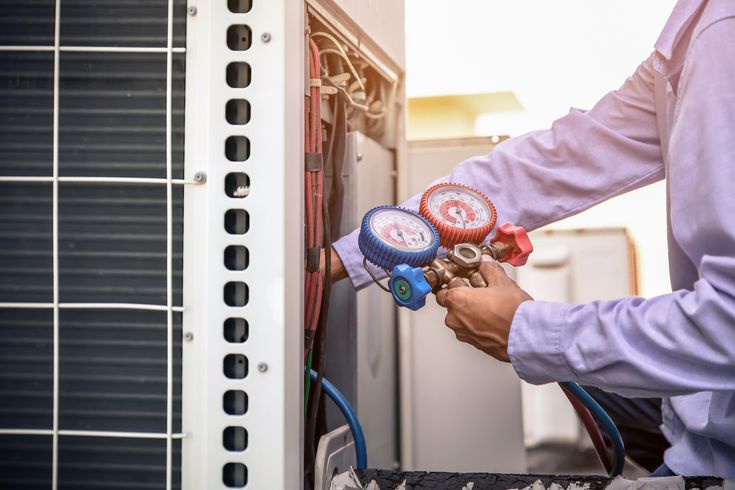
Air conditioning systems play a crucial role in maintaining comfort, particularly in regions with extreme temperatures. However, inefficient AC units can lead to excessive energy consumption, higher utility bills, and increased environmental impact. To ensure optimal performance, several measures can be taken to enhance the efficiency of an air conditioning system. This guide explores practical steps that homeowners and businesses can implement to improve AC efficiency, reduce operational costs, and prolong the unit’s lifespan.
1. Regular Maintenance and Cleaning
Routine maintenance is vital for keeping an air conditioning system operating at peak efficiency. Here are some essential maintenance tasks:
- Cleaning or Replacing Filters: Air filters trap dust, dirt, and allergens. Clogged filters restrict airflow, forcing the system to work harder. It is recommended to clean or replace filters every 1-3 months.
- Cleaning the Evaporator and Condenser Coils: Over time, these coils accumulate dirt, reducing heat exchange efficiency. Annual cleaning of the coils can significantly improve performance.
- Checking Refrigerant Levels: Low refrigerant levels can cause the system to run inefficiently. A professional technician should check and recharge refrigerant as needed.
- Inspecting Ductwork for Leaks: Leaky ducts lead to energy wastage and reduced cooling efficiency. Sealing any leaks ensures that cool air reaches its intended destination.
- Lubricating Moving Parts: Proper lubrication reduces friction in components like motors and fans, preventing excessive wear and tear.
2. Optimizing Thermostat Settings
Smart thermostat usage can lead to significant energy savings. Consider the following strategies:
- Setting the Thermostat at an Optimal Temperature: The U.S. Department of Energy recommends setting the thermostat to 78°F (26°C) when home and increasing it when away.
- Using Programmable Thermostats: Smart thermostats allow users to schedule temperature adjustments based on their daily routines, reducing unnecessary cooling.
- Avoiding Extreme Temperature Settings: Setting the thermostat too low forces the AC to work harder, consuming more energy.
- Utilizing the Fan Mode: Using the AC fan mode helps distribute cool air evenly without running the compressor continuously.
3. Enhancing Home Insulation and Ventilation
Proper insulation and ventilation contribute to better cooling efficiency. Here’s how:
- Sealing Windows and Doors: Air leaks cause cool air to escape, making the system work harder. Weather stripping and caulking help in sealing gaps.
- Using Window Treatments: Curtains, blinds, or reflective window films can reduce heat gain from sunlight, minimizing the cooling load.
- Insulating Attics and Walls: Proper insulation prevents heat transfer, keeping indoor temperatures stable and reducing AC usage.
- Installing Attic Ventilation: Roof vents and attic fans help release trapped heat, reducing strain on the AC unit.

4. Improving Airflow and Circulation
Better airflow ensures efficient cooling and even temperature distribution. Consider these tips:
- Using Ceiling Fans: Ceiling fans help circulate cool air, allowing for a higher thermostat setting without sacrificing comfort.
- Keeping Vents Unobstructed: Blocked vents restrict airflow, reducing efficiency. Ensure that furniture and other objects do not obstruct air vents.
- Regularly Cleaning Air Ducts: Dust and debris in ducts can reduce airflow and impact indoor air quality.
- Installing Airflow Enhancers: Booster fans in ductwork can improve airflow in hard-to-reach areas.
5. Upgrading to Energy-Efficient Equipment
Investing in modern, energy-efficient air conditioning units can result in substantial savings. Here’s what to consider:
- Choosing an Energy Star-Certified Unit: Energy-efficient models consume less power while providing optimal cooling.
- Upgrading to a Variable-Speed AC System: These systems adjust compressor speed based on cooling demand, reducing energy consumption.
- Installing a Zoned HVAC System: Zoning allows different areas of a home to be cooled separately, improving efficiency.
- Using a High SEER-Rated AC Unit: A Seasonal Energy Efficiency Ratio (SEER) of 16 or higher is recommended for optimal energy savings.
6. Reducing External Heat Gain
Minimizing heat sources within and around a home can enhance cooling efficiency. Consider these steps:
- Planting Shade Trees: Trees or shrubs around the house can block direct sunlight and reduce heat gain.
- Using Light-Colored Roofing Materials: Reflective roofs absorb less heat, keeping indoor temperatures lower.
- Minimizing Indoor Heat Sources: Reducing the use of heat-generating appliances like ovens and dryers during peak hours can decrease cooling demand.
- Installing Radiant Barriers: These barriers reflect heat away from the house, reducing the need for air conditioning.
7. Practicing Smart Cooling Habits
Behavioral changes can significantly impact AC efficiency. Here’s how:
- Keeping Doors and Windows Closed: Open doors and windows allow warm air to enter, making the AC work harder.
- Using Natural Ventilation: Opening windows in the evening when temperatures are cooler can reduce reliance on AC.
- Limiting Humidity Levels: Using dehumidifiers can reduce the workload on an air conditioning system, as humid air feels warmer.
- Turning Off AC When Not Needed: When leaving the house for extended periods, turning off or increasing the thermostat setting helps conserve energy.

8. Scheduling Professional Inspections
Hiring a professional HVAC technician for routine inspections ensures that potential issues are addressed before they become major problems. Professional services include:
- Checking Electrical Components: Loose connections and faulty wiring can reduce efficiency and pose safety hazards.
- Inspecting the Compressor and Fans: Ensuring that these components are functioning properly prevents system failure.
- Calibrating the Thermostat: An improperly calibrated thermostat may cause inefficient cooling cycles.
- Performing Energy Audits: An HVAC specialist can conduct an energy audit to identify areas for improvement.
Conclusion
Enhancing the efficiency of an air conditioning system requires a combination of regular maintenance, smart thermostat usage, home insulation improvements, and investment in energy-efficient equipment. By following these steps, homeowners and businesses can reduce energy consumption, lower utility bills, and extend the lifespan of their AC units. Implementing these measures not only improves indoor comfort but also contributes to environmental sustainability by reducing overall energy demand. Taking proactive steps today can lead to long-term benefits in both efficiency and cost savings.


